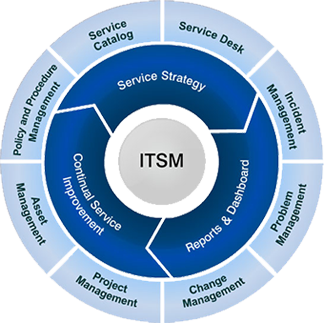Business and IT often have troubles understanding each other. Whether they are using in-house teams or third party service providers, those who work on the business side tend to see IT as completely cut-off from any business sense. IT teams in turn view business as oblivious to the current trends in business IT. Business might say that IT has problems with delivering on its promises, while IT might say that business doesn’t allow the freedom it needs. Business will claim that IT can actually halt growth, and IT will say that they’re still not allowed a chair at the grown-up table.
This kind of a gap wasn’t as difficult and dangerous just a couple of years ago. Today, however, innovations have started leveling out the playing field, and cloud-based applications have made the advantages of IT available and affordable for businesses of any size. Being able to closely align business and IT has become one of the important differentiators, and the companies who can’t catch up risk being left behind.
The Root of the Problem
A recent global CIO survey performed by Deloitte outlined some of the problems areas where business’ expectations didn’t meet IT’s capabilities. According to the survey, innovation and security were some of the areas where expectations and capabilities didn’t align. More than a half of CIOs reported that they’re expected to assist in innovation and to have cyber security as a top priority. At the same time, more than a half of them said that they don’t currently assist in innovation, and only one in ten said that cyber security is their top priority.
But the same survey also showed that IT is ready to tackle these problems from their end. Three-quarters of respondents noted that aligning IT with business strategy and performance goals is a way towards success. One of the most important takeaways from the survey is that CIOs need to be able to juggle between being operators, innovators, and business co-creators. The expanded role given to CIOs show that bringing IT into the fold when it comes to business requires adjustments from IT professionals, and would likely require the same from those who operate on the business end.
How Does ITSM Fit In?
IT service management is shaping to be one of the most promising responses to the problems of business and IT alignment. ITSM frameworks are developed to ensure that the services provided by the IT service providers have value to their users, and also to bridge a gap between the two parties.
But that gap is not exactly the same gap that’s driving IT and business sectors. IT service management principles and frameworks have been around since the mid-1990s at least. While they did concern themselves with how IT services are brought to the people who need them, and how lay people communicate their needs with IT professionals, ITSM on its own wasn’t able to address the alignment issues companies are facing.
The ITSM Shift
ITSM is undergoing a change of its own. It has to constantly adapt to new dynamics created by emerging technologies such as cloud storage and computing, the bring-your-own-device practices, the Internet of Things, and augmented and virtual reality. Data-powered automation is also one of the horizons ITMS is moving towards. IT service providers can now provide instant access to their services using a simple service management app. They can also harness the usage data of their clients and use it to increase efficiency. At a time when the capabilities to capture, store, and process data at an unprecedented level, IT service management is gearing up towards providing more value to their clients.
IT teams can leverage their data-analysis capabilities not only to make companies more efficient and cost-effective but also to point out the areas where innovation is needed. Discovering areas where improvement is overdue could help IT service providers to fulfill their new role as innovators. It can also give them insights that could help with business co-creation.
The client-centric approach to IT service management is bridging the gap between expectations and the ability to deliver, and IT teams can benefit from the procedures that were traditionally a part of ITSM frameworks. If business expects IT to be better at addressing security issues, there are provisions under ITSM framework that can help service teams preempt security breaches, or act faster and more efficiently when they happen. Actions as obvious as regular patching of systems can decrease security risks greatly. While bridging the gap between business and IT requires both parties to make an effort, IT already has some of the tools they need to make sure that it becomes better at meeting business’ expectations.
Learn more
This world has come a long way in terms of technological advances. Our lives are made easier having the world at our fingertips, with just the tou ...
Competitiveness. It's the watchword for businesses of any size, and in every industry. if you aren't able to keep up, technology-wise and in every ...
The cloud has completely changed the way we do business over recent years. With new cloud-based solutions appearing every day, businesses must loo ...
Online marketing is one of the best marketing techniques that most businesses use today to increase their revenues through online sales. However, ...
No one likes to be accused of walking around with their head in a cloud. However, keeping your sensitive business info in the cloud is a whole oth ...








